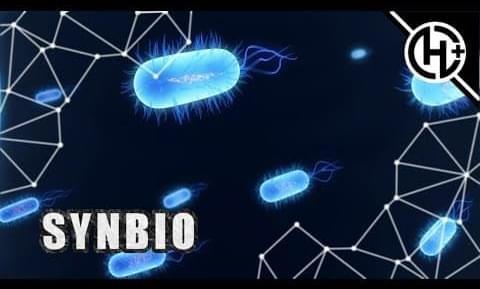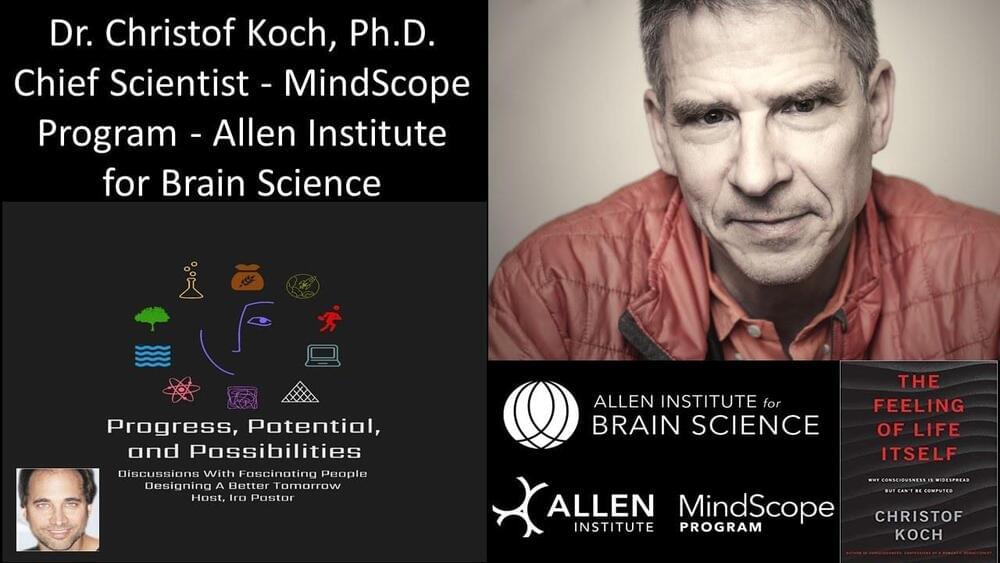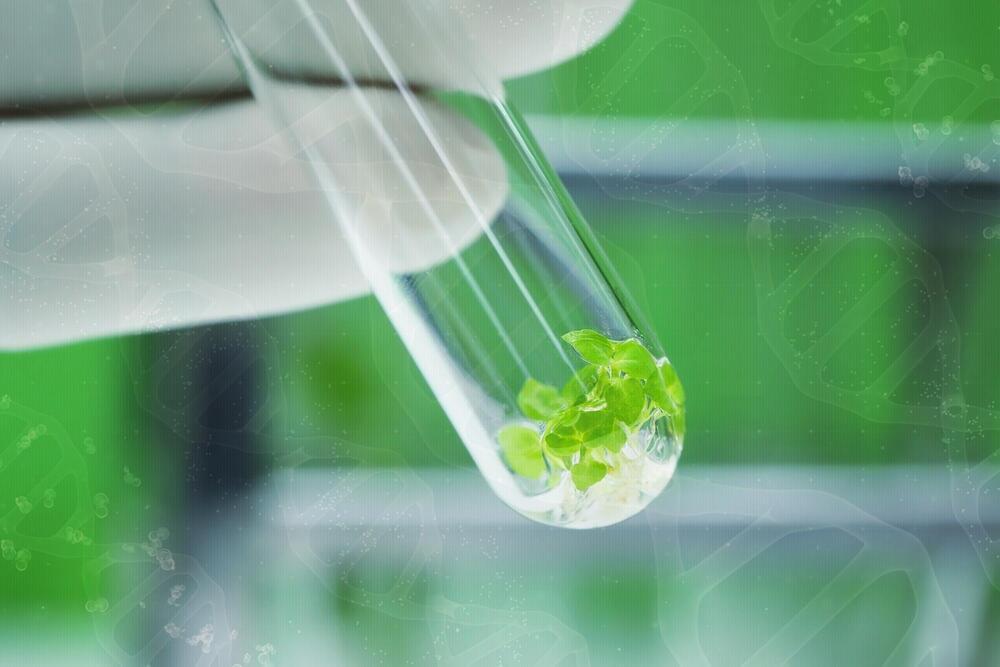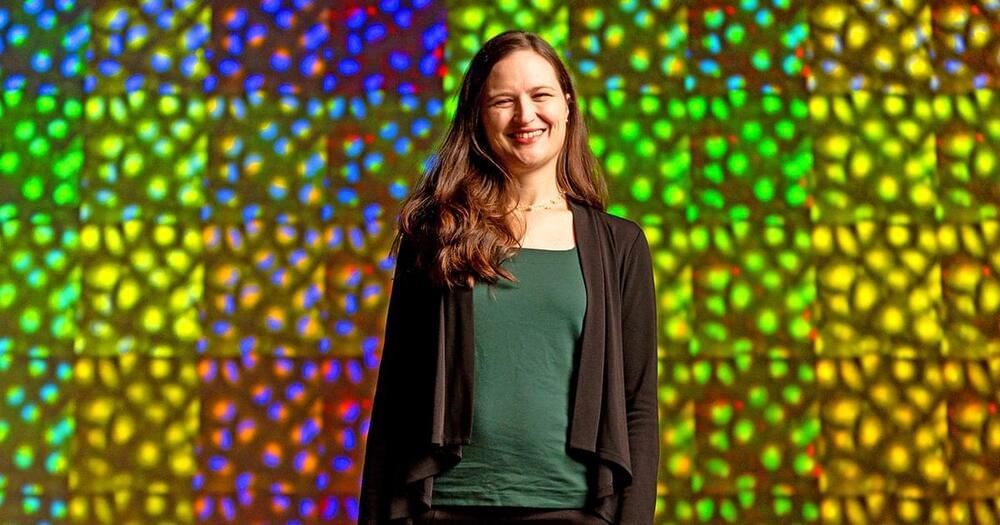PATREON https://www.patreon.com/transhumania.
MINDS : https://www.minds.com/transhumania.
FACEBOOK https://www.facebook.com/Transhumania-260675131517616/
TWITTER https://twitter.com/TranshumaniaR

PATREON https://www.patreon.com/transhumania.
MINDS : https://www.minds.com/transhumania.
FACEBOOK https://www.facebook.com/Transhumania-260675131517616/
TWITTER https://twitter.com/TranshumaniaR

Consider the room you are sitting in: From the injection-molded plastic of a computer mouse to the synthetic carpet fibers on the floor, you are surrounded by petroleum-derived products in your daily life. But what if there is a better way to produce the products we depend on with cleaner and greener materials? Biomanufacturing offers a way to use materials from nature to create the items we use every day.
Checkerspot, a materials innovation company, is rethinking products from a molecular level. It is optimizing microbes to biomanufacture unique structural oils found in nature. The company has taken the technology it has built and turned it into a platform to bring us closer to a post-petroleum future.

Dr. Yuval Noah Harari, macro-historian, Professor, best-selling author of “Sapiens” and “Homo Deus,” and one of the world’s most innovative and exciting thinkers, has a few hypotheses of his own on the future of humanity.
He examines what might happen to the world when old myths are coupled with new godlike technologies, such as artificial intelligence and genetic engineering.
Harari tackles into today’s most urgent issues as we move into the uncharted territory of the future.
According to Harari, we are probably one of the last generation of homo sapiens. Within a century earth will be dominated from entities that are not even human, intelligent species that are barely biological. Harari suggests the possibility that humans are algorithms, and as such Homo sapiens may not be dominant in a universe where big data becomes a paradigm.
Robots and AI will most likely replace us in our jobs once they become intelligent enough.
Although he is hopeful that AI might help us solve many problems, such as healthcare, climate change, poverty, overpopulation etc, he cautions about the possibility of an AI arms race.
Furthermore Dr. Yuval Noah Harari suggests this technology will also allow us to upgrade our brains and nervous systems. For example, humans will be able to connect their minds directly to the internet via brain implants.

Biological immortality is not enough for an immerging community of Transhumanists. They’re hoping for a different take on Mind Uploading to offer them immortality. The Digital Immortality Definition depends on the person you ask, but one things is for certain the future is going to be weird when it comes to people longing for longevity and the goal of stopping aging completely. Living inside a computer by mind uploading to live forever may actually become a reality very soon in 2021.
–
If you enjoyed this video, please consider rating this video and subscribing to our channel for more frequent uploads. Thank you! smile
–
TIMESTAMPS:
00:00 A new kind of Immortality.
02:05 Artificial Intelligence + Longevity =?
04:20 What are “Virtual Humans”?
06:40 The potential problem of consciousness.
08:53 Last Words.
–
#ai #longevity #immortality

Studying The Atoms Of Perception, Memory, Behavior and Consciousness — Dr. Christof Koch, Ph.D. — Chief Scientist, MindScope Program, Allen Institute.
Dr. Christof Koch, Ph.D. (https://alleninstitute.org/what-we-do/brain-science/about/team/staff-profiles/christof-koch/) is Chief Scientist of the MindScope Program at the Allen Institute for Brain Science, originally funded by a donation of more than $500 million from Microsoft founder and philanthropist Paul G. Allen.
With his B.S. and M.S. in physics from the University of Tübingen in Germany and his Ph.D. from the Max-Planck Institute for Biological Cybernetics, Dr. Koch spent four years as a postdoctoral fellow in the Artificial Intelligence Laboratory and the Brain and Cognitive Sciences Department at MIT, and from 1987 until 2,013 was a professor at Caltech, from his initial appointment as Assistant Professor, Division of Biology and Division of Engineering and Applied Sciences, to his final position as Lois and Victor Troendle Professor of Cognitive & Behavioral Biology.
Dr. Koch joined the Allen Institute for Brain Science as Chief Scientific Officer in 2011 and became it’s President in 2015.
Dr. Koch’s passion are neurons, or what he refers to as the atoms of perception, memory, behavior and consciousness, including their diverse shapes, electrical behaviors, and their computational function within the mammalian brain, in particular in neocortex, and he leads the Allen Institute for Brain Science effort to identify all the different types of neurons in the brains of mice and humans – known as their cell census effort.
Dr. Koch’s writings and interests integrate theoretical, computational and experimental neuroscience with philosophy and contemporary trends, in particular artificial intelligence, and he has authored more than 300 scientific papers and multiple books including, The Feeling of Life Itself – Why Consciousness is Everywhere But Can’t be Computed, Consciousness: Confessions of a Romantic Reductionist, The Quest for Consciousness: A Neurobiological Approach, Biophysics of Computation: Information Processing in Single Neurons, and Methods in Neuronal Modeling: From Ions to Networks. He has also served as editor for several books on neural modeling and information processing.

An international team of scientists from Austria and Germany has launched a new paradigm in magnetism and superconductivity, putting effects of curvature, topology, and 3D geometry into the spotlight of next-decade research. The results are published in Advanced Materials.
Traditionally, the primary field in which curvature plays a pivotal role is the theory of general relativity. In recent years, however, the impact of curvilinear geometry has entered various disciplines, ranging from solid-state physics to soft-matter physics to chemistry and biology; and giving rise to a plethora of emerging domains, such as curvilinear cell biology, semiconductors, superfluidity, optics, plasmonics and 2D van der Waals materials. In modern magnetism, superconductivity and spintronics, extending nanostructures into the third dimension has become a major research avenue because of geometry-, curvature-and topology-induced phenomena. This approach provides a means to improve conventional functionalities and to launch novel functionalities by tailoring the curvature and 3D shape.
“In recent years, there have appeared experimental and theoretical works dealing with curvilinear and three-dimensional superconducting and (anti-)ferromagnetic nano-architectures. However, these studies originate from different scientific communities, resulting in the lack of knowledge transfer between such fundamental areas of condensed matter physics as magnetism and superconductivity,” says Oleksandr Dobrovolskiy, head of the SuperSpin Lab at the University of Vienna. “In our group, we lead projects in both these topical areas and it was the aim of our perspective article to build a ‘bridge’ between the magnetism and superconductivity communities, drawing attention to the conceptual aspects of how extension of structures into the third dimension and curvilinear geometry can modify existing and aid launching novel functionalities upon solid-state systems.”

A new analytical technique is able to provide hitherto unattainable insights into the extremely rapid dynamics of biomolecules. The team of developers, led by Abbas Ourmazd from the University of Wisconsin–Milwaukee and Robin Santra from DESY, is presenting its clever combination of quantum physics and molecular biology in the scientific journal Nature. The scientists used the technique to track the way in which the photoactive yellow protein (PYP) undergoes changes in its structure in less than a trillionth of a second after being excited by light.
“In order to precisely understand biochemical processes in nature, such as photosynthesis in certain bacteria, it is important to know the detailed sequence of events,” Santra says. “When light strikes photoactive proteins, their spatial structure is altered, and this structural change determines what role a protein takes on in nature.”
Until now, however, it has been almost impossible to track the exact sequence in which structural changes occur. Only the initial and final states of a molecule before and after a reaction can be determined and interpreted in theoretical terms. “But we don’t know exactly how the energy and shape changes in between the two,” says Santra. “It’s like seeing that someone has folded their hands, but you can’t see them interlacing their fingers to do so.”

The future of Neuromorphic computing and nanotechnology enabling real life Nanosuits is already here according to several leading scientists in that field. Whether it’s the Nanosuit from Iron Man or from Crysis, the nanobots and brain computer interfaces which make those intelligent smart clothes up work in a very similar way.
Neuromorphic computing essentially involves assembling artificial neurons to function based on the principles of the human brain. It works on Spiking Neural Networks or SNNs, where each “neuron” sends independent signals to other neurons. It emulates natural neural networks that exist in biological brains.
–
Every day is a day closer to the Technological Singularity. Experience Robots learning to walk & think, humans flying to Mars and us finally merging with technology itself. And as all of that happens, we at AI News cover the absolute cutting edge best technology inventions of Humanity.
If you enjoyed this video, please consider rating this video and subscribing to our channel for more frequent uploads. Thank you! smile
–
TIMESTAMPS:
00:00 What’s the plan?
01:55 How Neuromorphic Computing will enable Nanosuits.
03:36 How does Neuromorphic Computing work?
04:58 Nanosuit Material.
06:42 Last Words.
–
#nanosuit #nanobots #neuromorphic

Evolutionary genomics approach identifies genes that enable plants to live in the Atacama Desert, offering clues for engineering more resilient crops to face climate change.
An international team of researchers has identified genes associated with plant survival in one of the harshest environments on Earth: the Atacama Desert in Chile. Their findings, published in Proceedings of the National Academy of Sciences (PNAS), may help scientists breed resilient crops that can thrive in increasingly drier climates.
“In an era of accelerated climate change, it is critical to uncover the genetic basis to improve crop production and resilience under dry and nutrient-poor conditions,” said Gloria Coruzzi, Carroll & Milton Petrie Professor in the New York University (NYU) Department of Biology and Center for Genomics and Systems Biology, who co-led the study with Rodrigo Gutiérrez.

If you had told college-aged Anne, “22 years from now, you’re going to be leading a research group focused on AI,” I would have said you’re insane. It would not have been possible to make this shift into machine learning without having made friends with machine learning experts — particularly Jones.
After he and I finished our training at MIT, we started a lab together at the Broad Institute in 2,007 and we brainstormed a lot about how machine learning could help biologists. What allowed these ideas to percolate and develop was both of us hopping over the fence and getting familiar with the terminology and power of both sides, biology and computer science. It’s really a productive partnership.
And it’s not just Jones anymore. My group is about 50–50 in terms of people coming from the biology side versus the computational side.